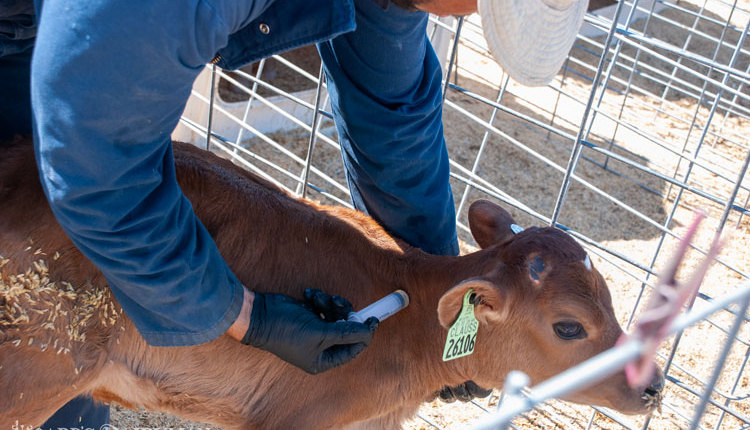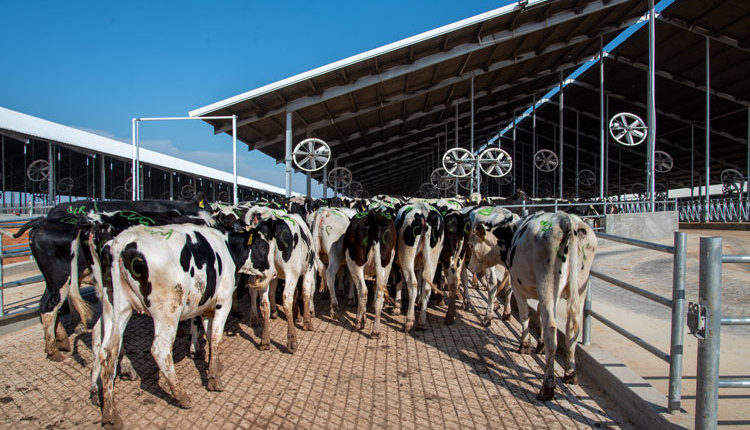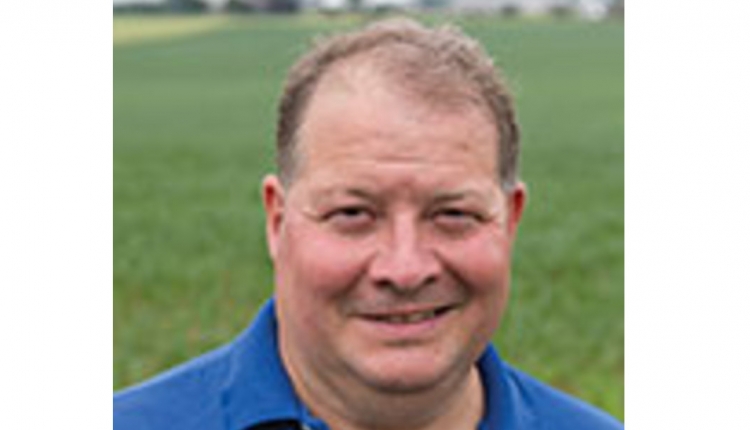The author is a partner in Maria Stein Animal Clinic, Maria Stein, Ohio.
I grew up on a dairy where all the employees had the same last name and, except for Grandma, all lived in the same house. It was the same for most of the dairies I worked with for many years in practice.
Change may come quickly, and change may come slowly, but change comes. I marveled one day, as we were working a large group of heifers, at the diversity of the workforce. I welcome the opportunity to learn about cultures different from mine by working side by side.
We're all different
Not everyone shares my views. In fact, I've met some supposedly successful people who view everybody else as failing at being like them. I considered this as our heifer count grew into the thousands, and we encountered the challenges and successes inherent in working large groups of cattle.
Behind me, steadily putting one heifer at a time into the tub part of our chute, was a man from Guatemala. Miguel was the best at doing that I've ever seen. As the veterinarian, I was in charge of palpating the heifers for pregnancy, injecting tuberculin for the TB test and, if the crew ahead of me was behind, drawing blood from the tail vein.
To my right and left were Amos and Levi, Amish men, giving injections. Their father, Abe, kept our blood tubes labeled and organized. A veterinary student, Stephanie, filled the role of a veterinary technician drawing blood from most of the heifers. Tyler, one of the local farm workers, ran the chute catching heads and reading ear tag numbers. The project manager, Theo, from the Netherlands, scanned the RFID ear tags, entered pregnancy dates and metal ear tag numbers into the computer.
This crew was thrown together quickly as we didn't have much warning this work was coming. Training makes work go better, so I spent some time explaining each step and demonstrating the important processes. We got one chute going, and I roamed the work area advising this crew and training the second crew. Within an hour, the second chute was started and worked steadily.
By the middle of the first day, roles were worked out, and we were making better time. We moved some people around from their original roles. For example, Jose was too soft spoken to call out the ear tag numbers but was very smooth at giving injections. One chute was hydraulic requiring quick reflexes, and one was mechanical needing a strong arm.
Midway through the second day, we had several people cross-trained so processing could continue when some workers left the chute to retrieve the next group of heifers. On the third day, a representative from the heifer buyer showed up unannounced and started telling crew members that they were doing their jobs wrong.
Productivity slowed to a crawl. That rep had never actually worked cattle, but he had ideas about it. I guess you could consider him a consultant, using his position of authority to change how work was done. Kind of like a steer advising a bull on how to do his job. I wonder, how much of his attitude was because the workers were of different cultures?
We have the same issue on some dairies. Phillip, the herdsman, and I were working through the herd check when quite a commotion broke out in the nearby hospital area. The owner was giving a newly immigrated employee quite a berating for opening the wrong gate. When we loaded the next rail, I asked Phil where our cow pusher was, and he said that worker had quit on the spot. I wondered if that owner would treat a local worker the same way.
Diversity is a strength
Our industry has become very diverse. Almost half of the workers milking cows in the United States have English as a second language. I marvel at the abilities that many bring to our farms with very fast hands and endurance I struggle to match. Of course, when you perform repetitive procedures, it makes sense to evaluate who does them and how you can make the process more effective. In that evaluation, the best managers see their staff members as individuals and capitalize on their strengths and train and reassign through their weaknesses.
One of our best managers, Paul, gets tremendous performance out of his crew. Watching him work with them is an education. One day at herd check, a new cow pusher left a gate unchained and two cows escaped. The pusher promptly and calmly retrieved the cows and brought them back to us.
Paul quietly asked, "What happened?" The pusher replied, "I forgot," and the issue was over. It never happened again. Paul knew well how to praise publicly and reprimand privately. How is that going where you work?
I grew up on a dairy where all the employees had the same last name and, except for Grandma, all lived in the same house. It was the same for most of the dairies I worked with for many years in practice.
Change may come quickly, and change may come slowly, but change comes. I marveled one day, as we were working a large group of heifers, at the diversity of the workforce. I welcome the opportunity to learn about cultures different from mine by working side by side.
We're all different
Not everyone shares my views. In fact, I've met some supposedly successful people who view everybody else as failing at being like them. I considered this as our heifer count grew into the thousands, and we encountered the challenges and successes inherent in working large groups of cattle.
Behind me, steadily putting one heifer at a time into the tub part of our chute, was a man from Guatemala. Miguel was the best at doing that I've ever seen. As the veterinarian, I was in charge of palpating the heifers for pregnancy, injecting tuberculin for the TB test and, if the crew ahead of me was behind, drawing blood from the tail vein.
To my right and left were Amos and Levi, Amish men, giving injections. Their father, Abe, kept our blood tubes labeled and organized. A veterinary student, Stephanie, filled the role of a veterinary technician drawing blood from most of the heifers. Tyler, one of the local farm workers, ran the chute catching heads and reading ear tag numbers. The project manager, Theo, from the Netherlands, scanned the RFID ear tags, entered pregnancy dates and metal ear tag numbers into the computer.
This crew was thrown together quickly as we didn't have much warning this work was coming. Training makes work go better, so I spent some time explaining each step and demonstrating the important processes. We got one chute going, and I roamed the work area advising this crew and training the second crew. Within an hour, the second chute was started and worked steadily.
By the middle of the first day, roles were worked out, and we were making better time. We moved some people around from their original roles. For example, Jose was too soft spoken to call out the ear tag numbers but was very smooth at giving injections. One chute was hydraulic requiring quick reflexes, and one was mechanical needing a strong arm.
Midway through the second day, we had several people cross-trained so processing could continue when some workers left the chute to retrieve the next group of heifers. On the third day, a representative from the heifer buyer showed up unannounced and started telling crew members that they were doing their jobs wrong.
Productivity slowed to a crawl. That rep had never actually worked cattle, but he had ideas about it. I guess you could consider him a consultant, using his position of authority to change how work was done. Kind of like a steer advising a bull on how to do his job. I wonder, how much of his attitude was because the workers were of different cultures?
We have the same issue on some dairies. Phillip, the herdsman, and I were working through the herd check when quite a commotion broke out in the nearby hospital area. The owner was giving a newly immigrated employee quite a berating for opening the wrong gate. When we loaded the next rail, I asked Phil where our cow pusher was, and he said that worker had quit on the spot. I wondered if that owner would treat a local worker the same way.
Diversity is a strength
Our industry has become very diverse. Almost half of the workers milking cows in the United States have English as a second language. I marvel at the abilities that many bring to our farms with very fast hands and endurance I struggle to match. Of course, when you perform repetitive procedures, it makes sense to evaluate who does them and how you can make the process more effective. In that evaluation, the best managers see their staff members as individuals and capitalize on their strengths and train and reassign through their weaknesses.
One of our best managers, Paul, gets tremendous performance out of his crew. Watching him work with them is an education. One day at herd check, a new cow pusher left a gate unchained and two cows escaped. The pusher promptly and calmly retrieved the cows and brought them back to us.
Paul quietly asked, "What happened?" The pusher replied, "I forgot," and the issue was over. It never happened again. Paul knew well how to praise publicly and reprimand privately. How is that going where you work?










